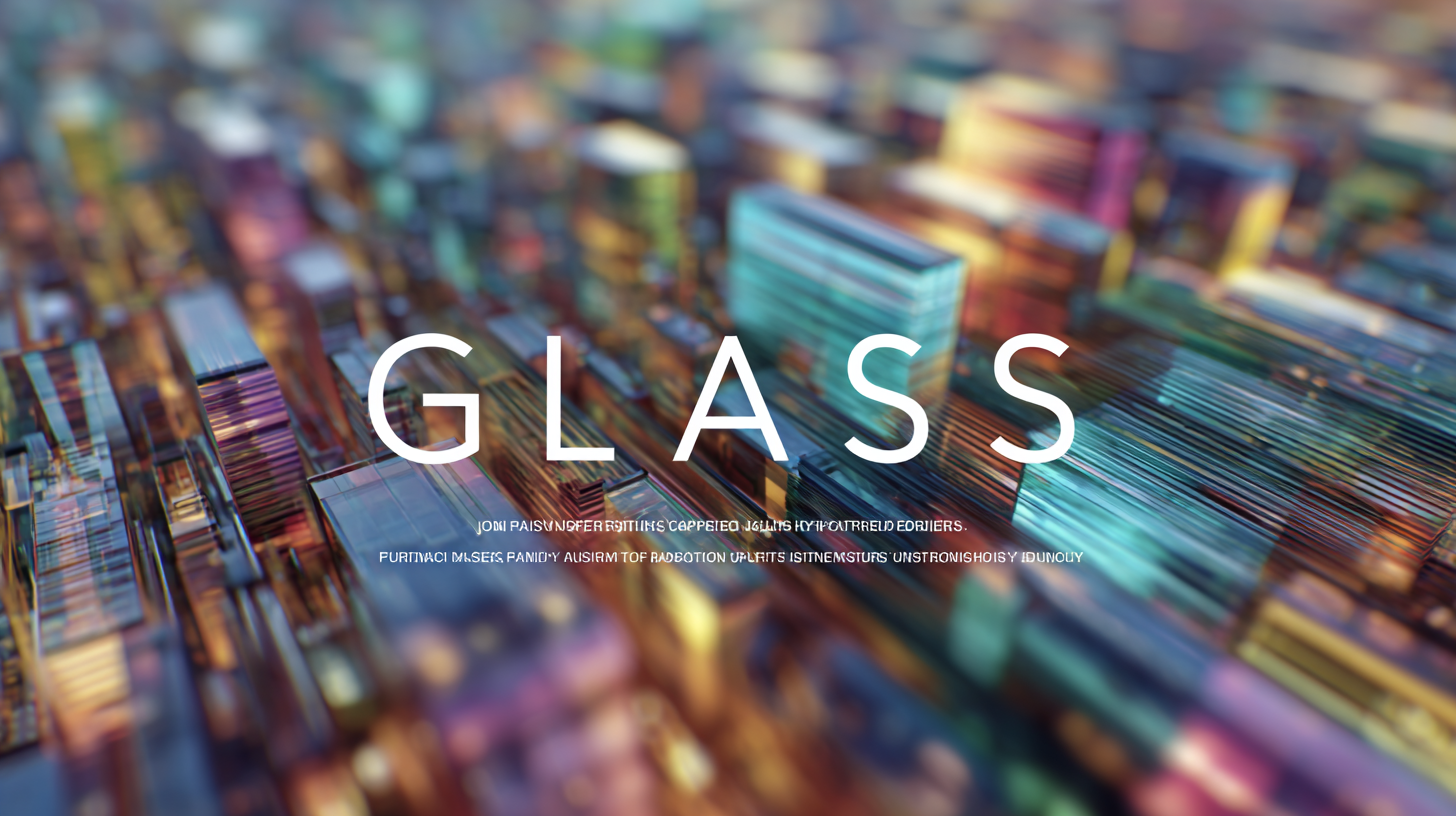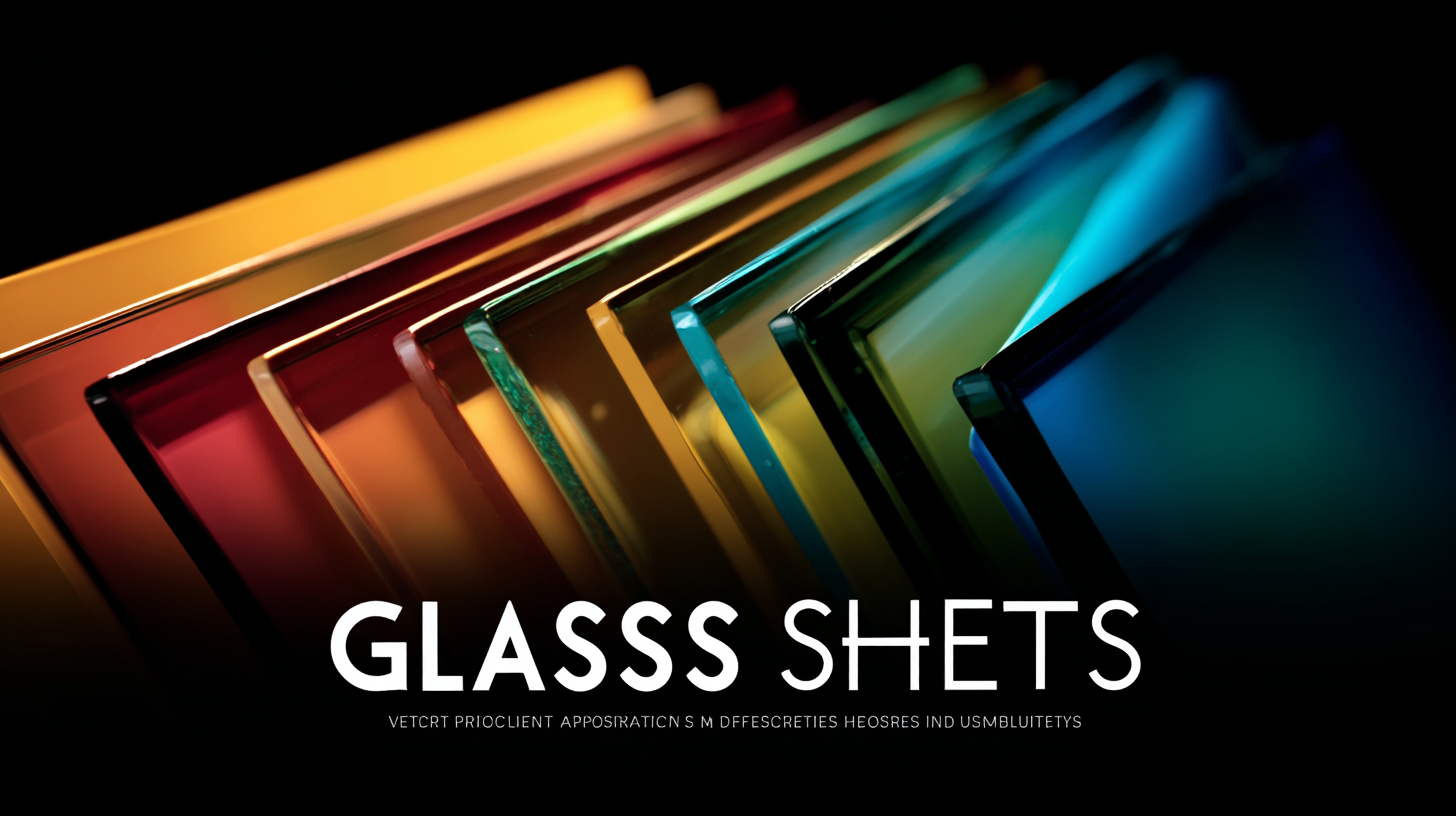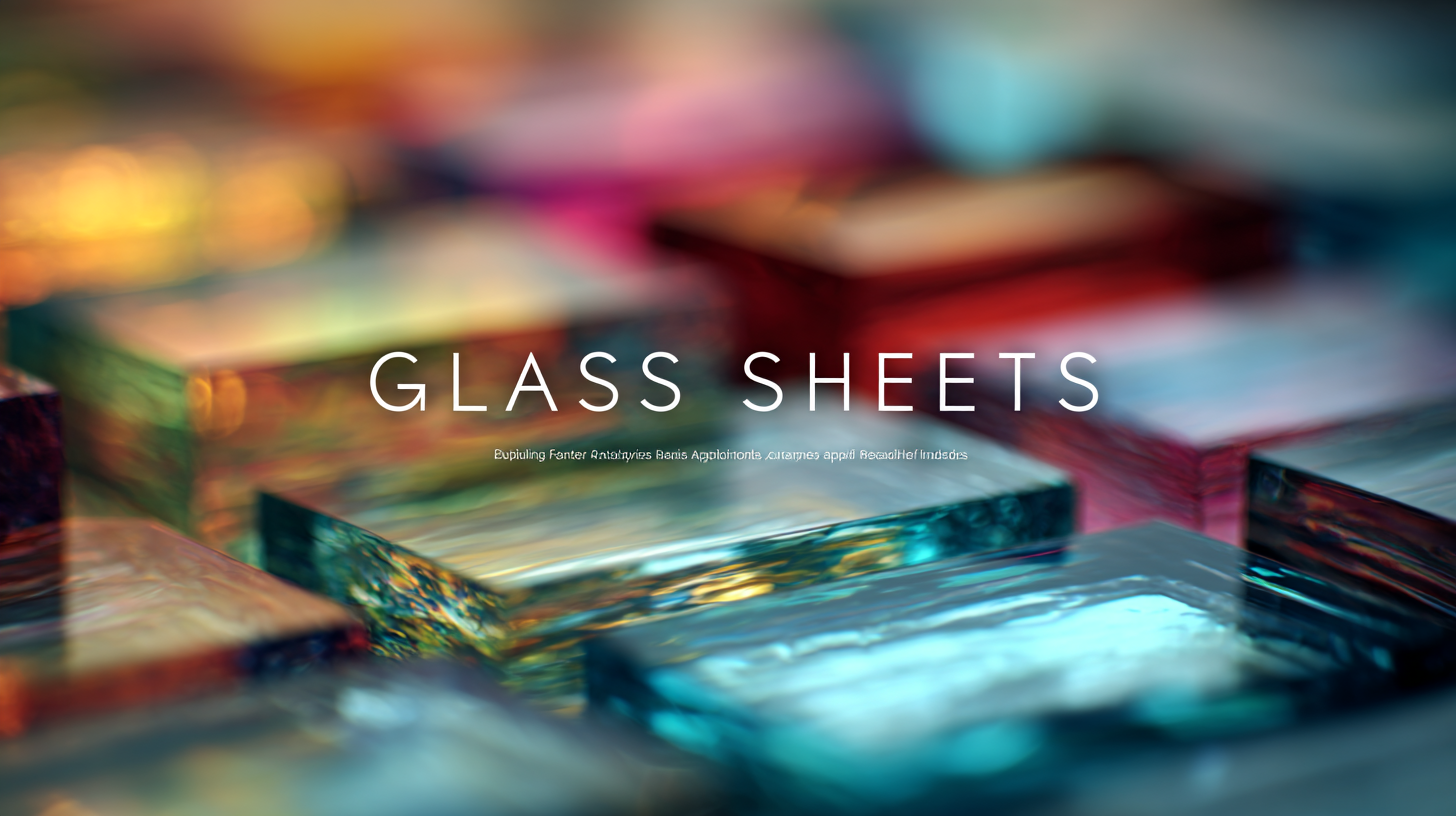
Exploring Innovative Applications of Best Glass Sheets Across Diverse Industries
In the contemporary industrial landscape, the versatility of glass sheets has garnered widespread attention, paving the way for innovative applications across various sectors. From architecture and automotive design to electronics and packaging, glass sheets are redefining traditional materials with their remarkable properties, such as strength, transparency, and aesthetic appeal. This blog explores the multifaceted uses of glass sheets, highlighting not only the advantages they bring in terms of functional performance but also the importance of effective after-sales service and maintenance costs. By delving into the "how-to" aspect, we aim to provide insights into selecting the right glass sheets for specific applications, ensuring optimal performance while minimizing long-term expenses. Join us as we navigate the exciting possibilities and indispensable advantages that glass sheets offer in today's diverse industries.

Emerging Trends in Glass Sheet Technology for 2025
As we look forward to 2025, the glass sheet industry is poised to experience significant technological advancements that will redefine its applications across various sectors. Recent reports indicate that the market for smart glass technologies is expected to reach over $10 billion by 2025, driven by demand in architecture, automotive, and consumer electronics. Innovations such as electrochromic and thermochromic glass sheets not only enhance aesthetics but also improve energy efficiency, enabling buildings to reduce heating and cooling costs.
Furthermore, the integration of augmented reality (AR) and artificial intelligence (AI) into glass technologies presents exciting possibilities. Experts predict that AI-powered smart glasses will become mainstream, transforming the way users interact with their environments. Technologies that allow for context-aware assistance are set to revolutionize industries like healthcare and retail, where real-time data and visual overlays can enhance operational efficiency and customer experience. As these trends emerge, the challenge for manufacturers will be to keep pace with the demand for high-quality, versatile glass sheets that meet the evolving needs of consumers and businesses alike.
Revolutionizing Architecture: The Role of Glass Sheets in Modern Design
In recent years, glass sheets have become an integral part of modern architectural design, transforming the way buildings interact with their environments. According to a report by Research and Markets, the global architectural glass market is projected to reach $158 billion by 2027, driven by the increasing demand for energy-efficient and aesthetically pleasing design solutions. Architects and designers are now utilizing glass sheets not just for their transparency and elegance, but also for their innovative functionalities, such as solar control and acoustic performance.

The versatility of glass sheets allows for the seamless integration of natural light, which enhances the ambiance of spaces while reducing reliance on artificial lighting. A report from Smithers Pira highlights that the demand for energy-efficient buildings has led to a 30% increase in the use of insulated glass units (IGUs) in contemporary architecture. This trend not only contributes to the sustainability of structures but also elevates their aesthetic appeal, reflecting a shift toward environmentally conscious design. Furthermore, advancements in glass technology have led to the development of smart glass, which can adjust transparency and heat absorption based on external conditions, thus paving the way for a new era in architectural innovation.
Sustainable Solutions: Eco-Friendly Glass Sheets in Manufacturing
The increasing demand for sustainable solutions in various industries has spotlighted eco-friendly glass sheets as a transformative innovation. Recent advancements showcased at the China International Glass Exhibition highlight the significant strides made in integrating sustainability with glass manufacturing. From enhancing energy efficiency to promoting recycling processes, these glass sheets are becoming central to eco-conscious business strategies. Notably, the novel recycling method using alkaline leaching allows for efficient recovery of silicon materials, thereby minimizing waste and reinforcing the circular economy.
In addition to recycling innovations, the emphasis on circular economies within the glass sector is paving the way for high-value applications of recycled materials. The incorporation of Industry 4.0 technologies enables improved processes that bolster the recovery and reuse of glass waste, while Industry 5.0 promises more personalized and efficient production methods. These advancements not only contribute to sustainable manufacturing but also encourage businesses and homeowners alike to consider eco-friendly upgrades for 2025 and beyond, solidifying glass sheets as a critical component in the journey towards a more sustainable future.
Exploring Innovative Applications of Best Glass Sheets Across Diverse Industries - Sustainable Solutions: Eco-Friendly Glass Sheets in Manufacturing
| Industry | Application | Type of Glass Sheet | Sustainability Features |
|---|---|---|---|
| Construction | Facade glazing | Low-E Glass | Energy efficiency, UV protection |
| Automotive | Windshields | Laminated Glass | Shatter resistance, recyclable materials |
| Packaging | Food containers | Tempered Glass | Reusability, chemical resistance |
| Electronics | Device screens | Gorilla Glass | Durability, low environmental impact |
| Interior Design | Decorative panels | Frosted Glass | Recyclable, aesthetic appeal |
Advanced Applications of Glass Sheets in the Automotive Industry
The automotive industry is witnessing a transformative shift with the integration of advanced glass sheets, revolutionizing vehicle design and safety. According to a report by MarketsandMarkets, the global automotive glass market is projected to reach USD 25.4 billion by 2025, growing at a CAGR of 6.5%. This growth is largely driven by the increasing demand for lightweight and fuel-efficient vehicles, where glass sheets play a pivotal role. The deployment of laminated glass in windshields not only improves structural integrity but also enhances sound insulation, creating a quieter and more comfortable driving experience.

Additionally, innovative applications of glass sheets extend beyond traditional uses. With the rise of smart glass technology, electrochromic glass sheets allow for dynamic light control, adapting to changing environmental conditions while improving energy efficiency. This technology has shown to reduce heat buildup, potentially lowering air conditioning energy consumption by up to 30%, according to a study published by the International Journal of Automotive Technology. As automakers focus on enhancing user experiences and meeting sustainability goals, the advanced applications of glass sheets will undeniably take center stage in the development of the next generation of vehicles.
Innovations in Glass Sheet Usage within the Electronics Sector
The electronics sector is experiencing a transformative shift with the innovative applications of glass sheets. According to a recent report by Grand View Research, the global glass substrate market in electronics is expected to reach USD 21.88 billion by 2027, growing at a CAGR of 9.5% during the forecast period. This surge is attributed to the increasing demand for high-quality display technologies and the miniaturization of electronic devices. Glass sheets, particularly those treated for enhanced durability and optical clarity, are being integrated into everything from smartphones to high-definition televisions.
One noteworthy application is in the realm of flexible displays, where ultra-thin glass sheets are revolutionizing design possibilities. A study from MarketsandMarkets indicates that the flexible display market could grow from USD 29 billion in 2021 to USD 130 billion by 2026, driven by advancements in glass technology. These flexible glass substrates allow for bending and curving without compromising on display quality, enabling manufacturers to create sleek, innovative products that cater to consumer demands for versatility. Furthermore, the use of eco-friendly coatings on glass sheets has emerged, addressing sustainability concerns while maintaining the high-performance standards required in the electronics industry.
